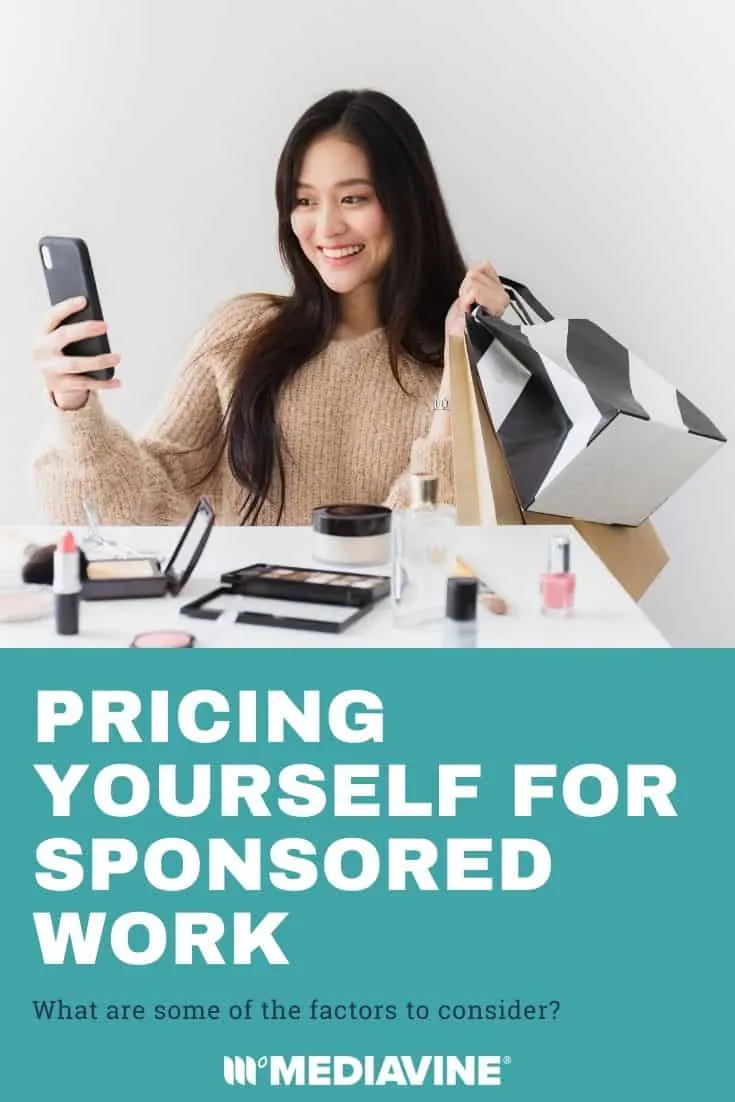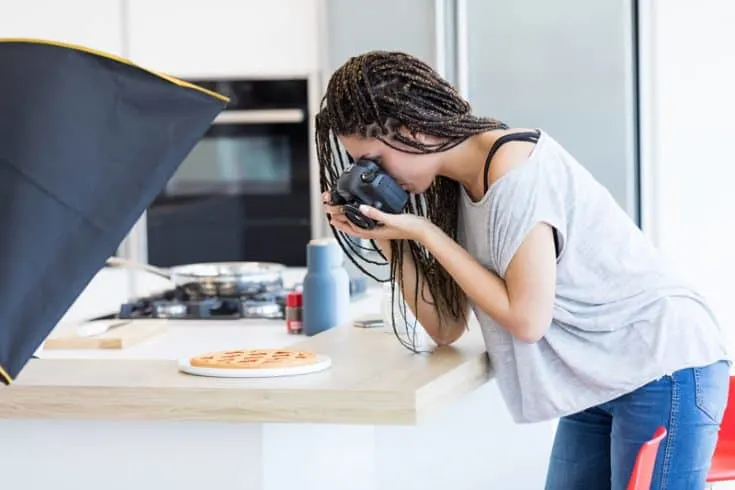Pricing Yourself For Sponsored Work


We are probably all familiar with the feeling you get when a brand rep asks, “What is your rate for this project?”
On one hand, hooray! They are willing to pay you real cash monies!
On the other, well… fiddlesticks. Now you have to come up with a rate.
It’s a double-edged sword, especially if the brand is asking for work you’ve never done as part of a paid campaign before.
How do you price yourself?
Spoiler alert: Unfortunately, there’s no easy answer to that question. There really aren’t any set standards or guidelines with regards to pricing sponsored work.
Some folks will recommend charging a certain amount of money per 1,000 or 10,000 followers, but that method has its limits.
It will often set too low of a rate for anyone with a smaller but really dedicated following, and on the other end can easily price larger influencers out of many campaigns.
There are, however, a number of factors that we recommend you consider when determining a rate for sponsored work.
Let’s review them, shall we?

I have one big exception to the “no standards or guidelines” rule, and that is the Getty Image Calculator.
I absolutely love the Getty Image Calculator for pricing usage rights on campaigns.
Simply go to the calculator, plug in the usage parameters a brand is looking for, and it will tell you what a common rate is for the requested rights.
For example, if a brand wants to use a food image in display advertising for up to 6 months, the calculator tells us that a common rate for these rights would be around $1,200.
It is up to you if you feel comfortable with the rates provided by the calculator, but at the very least it can provide a starting point when a brand asks to include usage rights as part of a campaign.
So now that we’ve covered my beloved Getty Image Calculator, let’s go ahead and dive into some of the factors you should take into account when setting your rates.
I have already alluded to this, but size isn’t everything when it comes to pricing your work!
Just because you don’t have 1 million followers doesn’t mean you aren’t worth a working wage.
This is not to say that the size of your audience shouldn’t be considered; it should only be one of a number of elements you think about.

Reader engagement is a huge factor with regards to rates, and can be the biggest counterpoint to a smaller following.
Niche bloggers often encounter the phenomenon of a small following being far more engaged than a massive following.
Often, this is due to the readers desperately needing solid product recommendations.
Let’s say you blog about traveling with your pet. You might have a smaller readership than other more broad travel bloggers, but your readers are so hungry for tips on which hotels are pet-friendly that they will hang onto your every recommendation.
This is wildly valuable to a brand and are the kinds of call-outs to make in a media kit and as you are communicating your value to a brand rep.
The quality of your content is important to consider as well, especially as compared to the specific asks a brand is making in their scope of work.
Do you take the time to SEO optimize your sponsored work? Factor it in.
Are they asking for image rights and you happen to take spectacular photos? Factor it in.
Do they want a lot of video content and video happens to be your specialty? Factor it in.
Are you getting the idea?

Considering the time required to complete a project is always something we recommend.
If a project is going to be very time consuming or takes you away from your family for an extended period of time, that’s something for which you need to account for!
Make sure you have a solid understanding of the full scope of work before sharing a rate.
You will want to take into consideration any variety of miscellaneous asks from a brand beyond the work itself and requested rights.
Examples include turnaround time, number of requested draft reviews, reporting requirements, or any other asks that make things harder or more inconvenient for you.
An ask that we are seeing more and more frequently from brands is the request to turn off ads for their sponsored post. It goes without saying that most brands want to be the only one editorially featured in a post that they’re paying for, but that ask is now extending to ads, which we all know is a totally separate revenue stream.
If a brand is making this request, we suggest at least attempting to kindly explain the nature of programmatic ads and the unlikelihood that a direct competitor’s ads would run in their post. If they still won’t budge? This ask definitely means more $$$ from them to balance the loss of revenue on the ads.
And make sure the ask has an expiration date! We recommend writing into the contract that ads may be turned back on after 30 days.
Similarly, consider your history with a brand. Have you worked with them before? Did they pay on time or did you have to chase them for payment? Do they have a history of last-minute changes?
If they are infamous for being hard to work with, charge them an “inconvenience tax.”
Yes, I am serious! Consider what rate you would have to get to not regret taking on another contract with them and stick to it.
No, don’t tell them this is why your rates have increased since you last worked with them.
But do make sure that you are charging enough to cover the time, energy, and general anxiety you are likely to experience throughout the campaign.
(Oh, and this should go without saying, but never, ever take on a contract with a brand who asks that you not disclose properly or asks you not to use nofollow links!)

This is a full post in an of itself, but for now I will say: Make sure you have everything your rate covers listed out in a detailed scope of work within your contract.
You should also make sure that your contract specifies that additional requests, delays in approval, or changes outside of the listed scope may result in additional fees. You always want to make sure you are covered!
At the end of the day, only you can know if you are charging the right amount of money for your work. If you feel 100% comfortable with the amount you are being paid and the amount of contracts you are receiving, that is all you need.
(However, if you find that brands are repeatedly saying yes when you quote your price without any hesitation or attempt to negotiate you down? YOU ARE UNDERPRICED!)
Stay up to date with the latest from Mediavine
Publishers spend time creating great content that keeps readers coming back, and we know that safeguarding that content and maintaining control over how it’s used are critical concerns in today’s …
 Eric Hochberger
Eric Hochberger
In a blog post last week, Google announced plans to launch generative AI into Search Labs with a new product called Search Generative Experience (SGE). What exactly is SGE, and …
Since ChatGPT’s release in November 2022, OpenAI’s prototype of generative AI — that is, artificial intelligence that can produce new content on demand — has dominated popular tech media. We’ve …